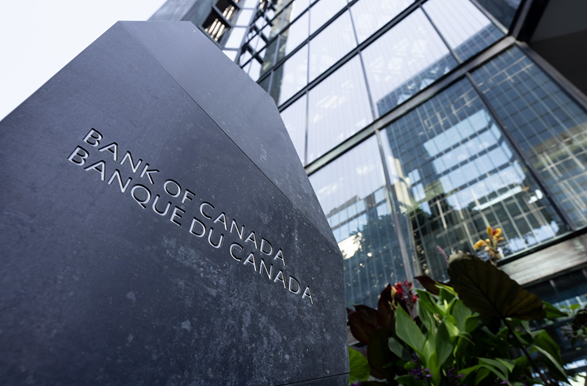“We should not unduly limit the development and potential future uses of the positive features of the crypto ecosystem.”
The above was the closing thought of the Governor of the U.S. Federal Reserve, Governor Christopher J. Waller in his ‘Thoughts on the Crypto Ecosystem’ speech Friday. The speech was made at the Global Interdependence Center Conference: Digital Money, Decentralized Finance, and the Puzzle of Crypto, 10 February 2023, La Jolla, California, U.S.
In pointing out that the development and potential future uses of the crypto ecosystem should not be limited, Governor Christopher J. Waller started by defining some concepts in the crypto ecosystem. According to him, the crypto ecosystem consists of three parts:
- a crypto-asset, which generally refers to any digital asset implemented using cryptographic techniques that is being traded;
- a database management protocol used to record trades, commonly referred to as the blockchain, which includes both permissioned and permissionless distributed ledger technologies; and
- technology that directly facilitates trading crypto-assets; this includes smart contracts and tokenization as a form of data privacy.
“The latter two parts may facilitate the trading of crypto-assets, but also have much broader applications”, Governor Christopher J. Waller pointed out. He also highlighted the concept of distributed ledger technology, smart contracts, and tokenization.
Distributed ledger technology, smart contracts, and tokenization are new technological developments that have potentials.
“While these technological developments are still in their infancy, they have potential applications beyond the crypto ecosystem that could lead to substantial productivity enhancements in other industries.”
Read also: What is cryptocurrency?
Crypto-assets have no intrinsic value.
Governor Christopher J. Waller believes that crypto-assets have no intrinsic value. They are merely objects driven by people’s beliefs.
‘Since Paul Samuelson’s seminal work in 1958 on intertemporal consumption smoothing, economists have known that an intrinsically useless object can trade at a positive price. Such an object’s value is driven purely by belief. If I believe someone will pay a positive price for this object in the future, then I may be willing to pay a positive price now, carry it across time, and sell it when I need to consume other goods and services. Samuelson referred to this concept as “the social contrivance of money.”‘
Read also: Alternative Finance: Understanding the basics of cryptocurrencies
The price of a crypto-asset without intrinsic value can drop to zero.
“While an intrinsically useless object can trade at a positive price, we also know that there is always a second equilibrium price for this object, which is zero. What if one day, beliefs change and I no longer believe that someone will pay me for this object in the future? Then I clearly shouldn’t pay anything for it today, so its price goes to zero.”
“There are many intrinsically useless objects that still have value. Consider things like baseball cards and celebrity autographs, which are pieces of cardboard and paper with pictures or scribbles on them. Based on their fundamental properties, these things have little to no intrinsic value, yet can be in high demand and command staggering prices. What happens if one day, no one wants to collect baseball cards? As valuable as they are today, they wouldn’t be worth much, if anything.”
If the price of the crypto-asset you buy or invest in drops to zero, do not expect taxpayers’ money to bail you out.
“To me, a crypto-asset is nothing more than a speculative asset, like a baseball card. If people believe others will buy it from them in the future at a positive price, then it will trade at a positive price today. If not, its price will go to zero. If people want to hold such an asset, then go for it. I wouldn’t do it, but I don’t collect baseball cards, either. However, if you buy crypto-assets and the price goes to zero at some point, please don’t be surprised and don’t expect taxpayers to socialize your losses.”
Crypto-assets are risky and players are still in their infancy.
The upshot of this is that crypto-assets are risky and many of the firms dealing in them are in their infancy. That has come to bear in the past year as several prominent crypto-related firms have filed for bankruptcy, including payment platforms, exchanges, crypto lenders, and hedge funds. The declines in crypto-asset values and associated business failures have led to many investors in the crypto industry getting hurt.
Crypto-asset adoption is growing amongst U.S. households, thus requiring regulators to consider whether there is need for consumer protection and investor safety.
As I mentioned in a speech last summer, surveys conducted indicated that somewhere between 12 and 20 percent of U.S. adults have owned, traded, or used crypto-assets. As losses mount, the debate is turning to whether there should be better investor protections in place.
Read also: Crypto assets to outperform traditional asset classes in 2023— CryptoCompare reports
Read also: JPMorgan now allows its retail customers to access crypto asset investments.
Apart from retail investors, institutional investors are also affected, with FTX collapse wiping out millions of dollars in pension-fund investments in crypto.
But even institutional investors, with significant resources to conduct due diligence of investments, have felt the pain of the so-called crypto winter. For example, it has been reported that at least 15 public pension funds, which manage public employee retirement funds, had investments in the now-bankrupt crypto-asset exchange, FTX.
Read also: FTX Collapse: Does FTT have a future?
There is a need for balance between innovation and regulation.
According to Governor Christopher J. Waller, while he doesn’t care “if people take on risky investments or engage in risky business ventures, banks and other financial intermediaries must engage in any activity they do in a safe and sound manner.”
“I’m supportive of prudent innovation in the financial system, while at the same time concerned about banks engaging in activities that present a heightened risk of fraud and scams, legal uncertainties, and the prevalence of inaccurate and misleading financial disclosures.”
Banks dealing with crypto should adopt risk-based regulation.
As with any customer in any industry, a bank engaging with crypto customers would have to be very clear about the customers’ business models, risk-management systems, and corporate governance structures to ensure that the bank is not left holding the bag if there is a crypto meltdown. And banks considering engaging in crypto-asset-related activities face a critical task to meet the “know your customer” and “anti-money laundering” requirements, which they in no way are allowed to ignore.
We should not unduly limit the development and potential future uses of the positive features of the crypto ecosystem.
Discover more from Crypto Asset Buyer
Subscribe to get the latest posts sent to your email.




